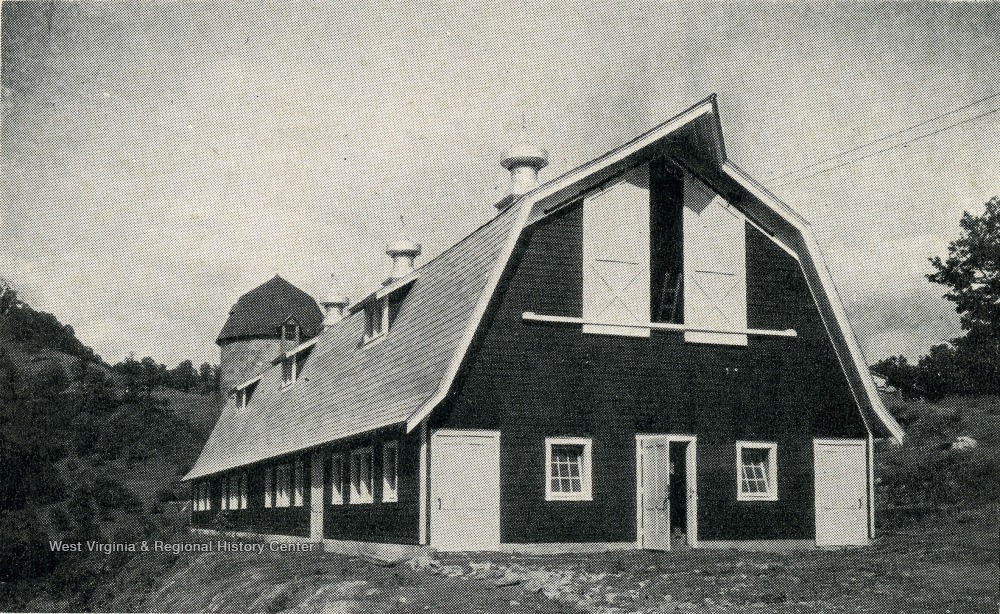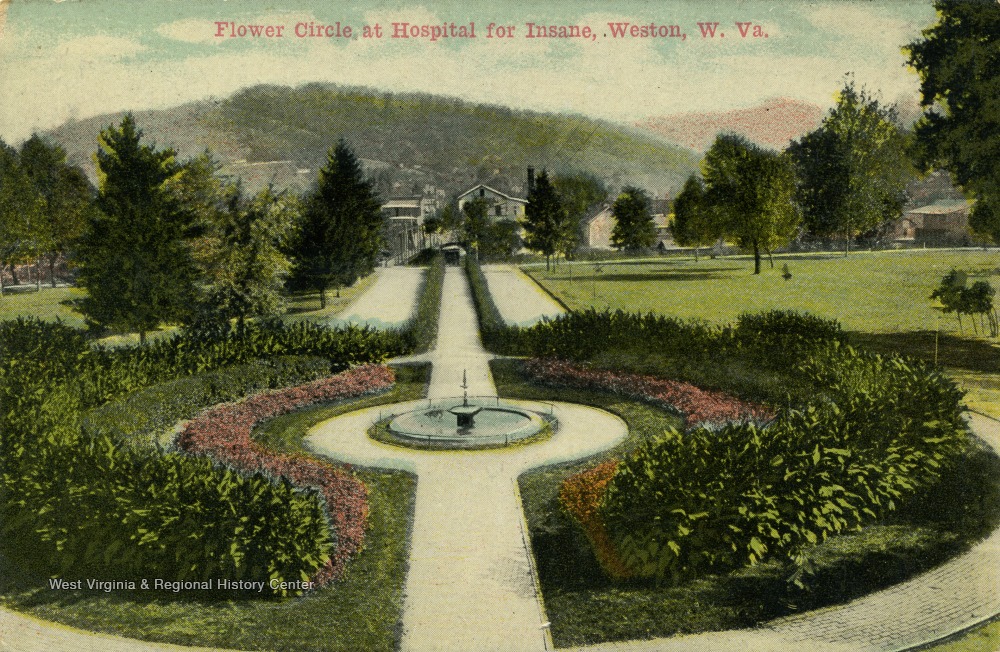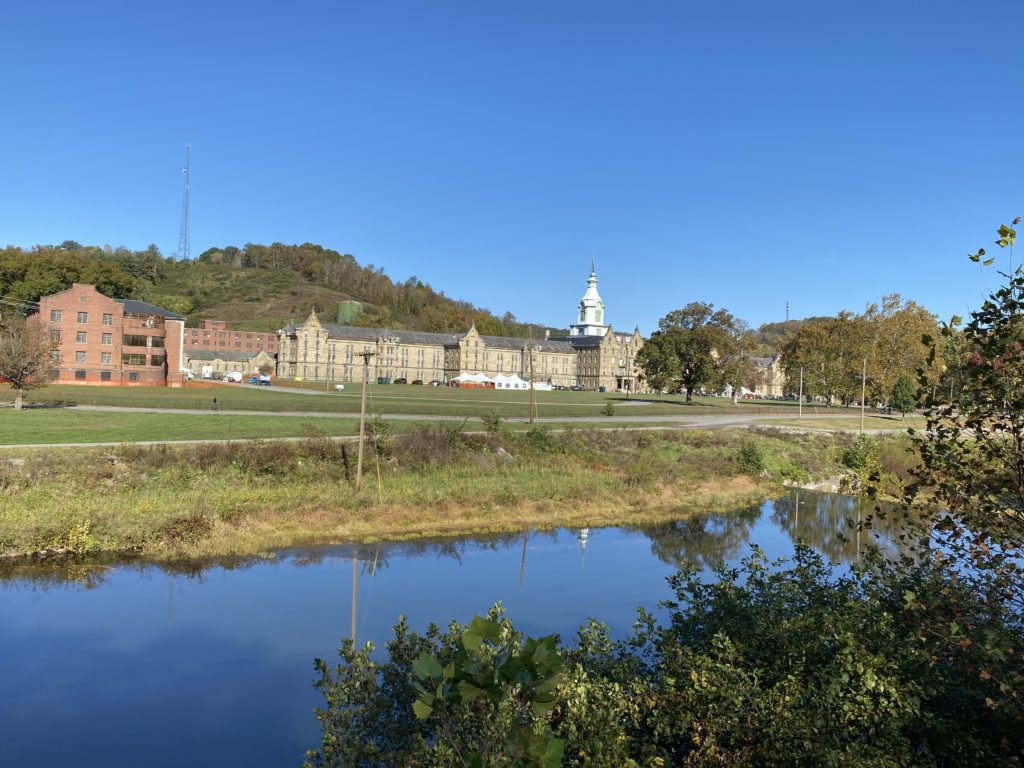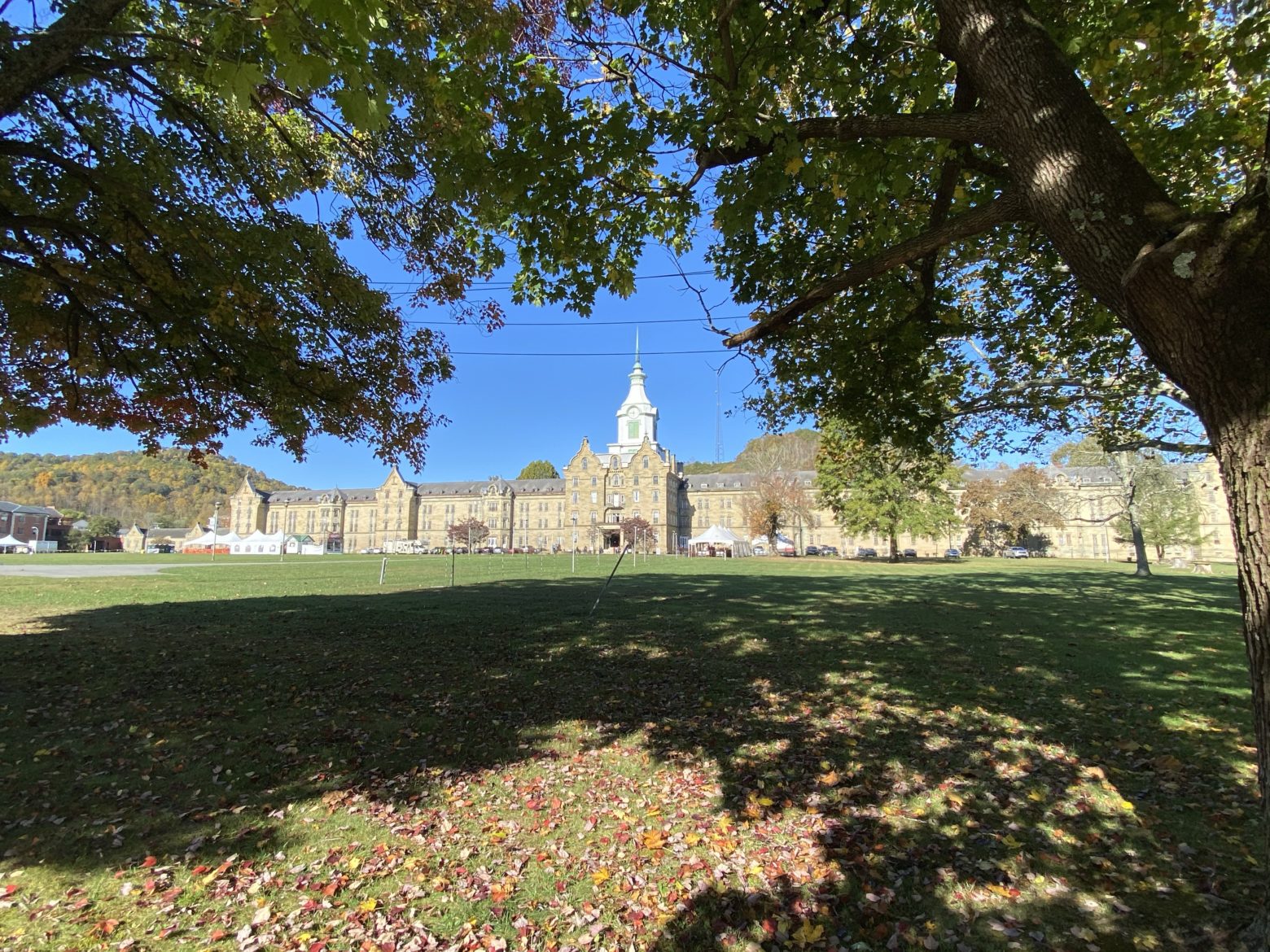My Connection
I grew up in Lewis County, West Virginia. I grew up in the southern part of the county, below where Stonewall Resort is today. When I was born, the glass industry of central West Virginia was in its last days,. I remember when the last glass factory in Weston shut down. Today, my hometown is known chiefly for three things: its glass museum, the Resort, and the Trans-Allegheny Lunatic Asylum.
My mom, dad, and several other relatives worked at the Asylum over the years. My dad’s mom, my Grandma Ruby (who had bipolar disorder), was a patient there at least once in my childhood. It wasn’t called the Trans-Allegheny Lunatic Asylum. Growing up, I only ever knew it by its simpler and much less offensive name: the Weston State Hospital.
A Self-Sufficient Campus
The Hospital is an enormous building. It stands on 300 acres of land, originally built to be a self-sustaining campus. The grounds included a coal mine, a dairy barn, a horse barn, a greenhouse, and other features necessary to maintain the facility and feed the patients there. The main original building is a Gothic castle made of local blue sandstone. It stretches over a thousand feet from one end to the other. The grounds are covered with sycamore and oak trees and an enormous front lawn is surrounded by a wrought-iron fence.
It was commissioned in 1858, by the government of Virginia. Its original proposed name is the one that it carries today: The Trans-Allegheny Lunatic Asylum. The Civil War, and the subsequent splitting of West Virginia from Virginia, delayed its construction. However, it was finally finished and opened as The West Virginia Hospital for the Insane. It was in operation from 1864 until 1994, becoming Weston State Hospital in 1913. In 1994, mass de-institutionalization programs and decreased funding caused a significant downsizing in inpatient psychiatric facilities. Enormous inpatient buildings were no longer required.

My Memories
I remember certain things very clearly. Some things, not as much, such as the exact details of the rooms or the layout of the interior. Here is what I remember about the Hospital:
I remember going to visit my dad at work regularly, in the physical therapy wing, as a little girl of 3 and 4. I remember sitting on a table and talking to him and the patients he was treating. They were always kind to me and my dad always treated them as just another person. They weren’t the Patient with Schizophrenia, or the Patient with Drug-Induced Psychosis. They were Mildred and Elaine and Bob and Terry. I remember the patients as people. Later, when the hospital shut down, many of them ended up in the same long-term facility as my Grandma Ruby did. I got to know them over the years of visiting her.
I remember going with my grandparents to pick up my parents at work, and playing in the flower garden in front of the main entrance. There was a fountain, which seemed huge to me at the time, and a round path. I loved watching the fountain and running in circles around the path. I remember how busy it was, with the parking lots full of cars and people coming and going.

I remember my parents talking about the feeling on the wards at night. The silence and dark and the frequent feelings of things not being quite right, of someone looming, of unexplained noises.
I remember my dad telling me about when the first anti-psychotic medications finally made it to the hospital, and how overnight the hospital went quiet. The patients stopped screaming and fighting, sedated and calmed by the powerful new medications in their blood.
I remember the stories my parents told me of deaths they had witnessed. The people who died from violence at the hand of other patients, or heart attacks, or choking. Of good doctors who tried to save them and help everyone, and of bad doctors who were just there to collect a paycheck.
I remember my Grandma June, my maternal grandmother, telling me about how she would never go into the basement. She told me about the chains and shackles that still hung on the walls there to restrain inhabitants. They were the tortured victims of ignorance and prejudice.
This is the Weston State Hospital I remember. These are the ghosts I think of when someone mentions it. I don’t think of TALA. I don’t think of all of the ghost-hunters that have filmed themselves there. I think of the people I knew and the people my parents knew, the patients they genuinely cared for and the injustices they saw. I think of my Grandma Ruby and my Grandma June.

My Ghosts
My ghosts of the Hospital are happy ghosts. I think of my family being together, of standing in front of this enormous building, running to hug my parents as they came out of the Hospital. My Grandpa Jim died in 1992. Soon after, Grandma Ruby was placed in Hopemont due to her rapidly deteriorating mental health. There is a kind of innocence and faith in the world you only have until you’ve experienced your first great loss. My memories of those visits to the Hospital are entwined with the memory of that innocence. Those days at the hospital were the last days before my family was fractured, and those memories some of my fondest childhood memories.
One of the first things you realize as a historian is that memory, and by extension history, is not set in stone. It is contested and it changes. As historians, we get new evidence and new information that challenges what we thought we knew and what we thought was truth.
As a society, we also create history to comfort ourselves or suit our own narrative. History can be a commodity to be sold like anything else in a capitalist society. In 2007, the abandoned building of Weston State Hospital was purchased by a private individual. The new owners sought to shape its history and the memory of the Hospital. Tomorrow, I discuss TALA’s interpretation of the Hospital, and the ghosts that it packages for consumption.

Mollie, My name is Robin Umholtz. I am 55 years old and living in Arkansas. When I was a little girl, my dad evangelized in Weston and had tent revivals. Patients from this mental hospital were allowed to come. As a little girl, I was fascinating with a particular patient named Mae or May Sprout. I used to sit in her lap fascinated with her bright red lipstick and her rows of bobby pins that framed both sides of her face. I want to know so badly what happened to her. If you have any information that you would be willing to share without it being a HIPPA violation, it would mean so much. I now work with people who are dealing with mental disorders. My phone number is 479-774-0725. I would greatly appreciate any info about Mae.